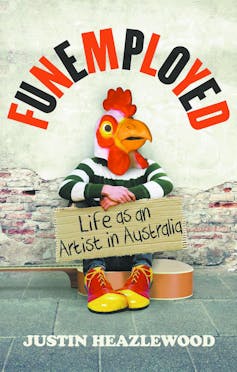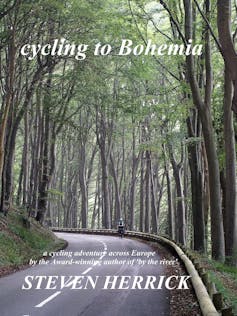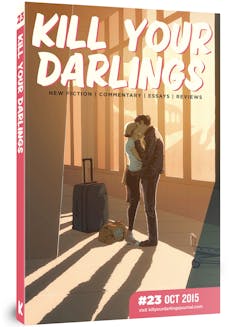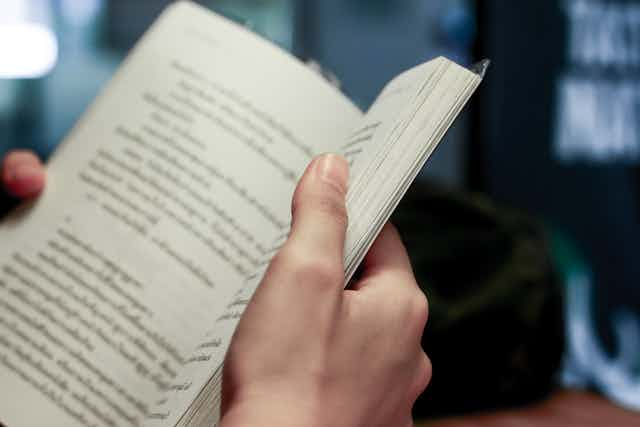In 2014, the Department of Economics at Macquarie University began a three-year study to examine the responses of Australian authors, publishers and readers to global changes in the current publishing environment.
Last week we released the first stage of the study, based on a survey of more than 1,000 Australian book authors. Our findings show that while book authors are innovators in their professional practices, the financial rewards for initiative and experimentation are unevenly distributed.
Authors’ income
The average income of Australian authors is A$12,900. Although a fifth of authors write as their full-time occupation, only 5% earn the average annual income from their creative practice (which we calculate using ABS data as A$61,485 for the 2013-14 financial year). Most authors rely on other paid work and their partner’s income to make ends meet.

Compounding this is the recent fall in the average selling price of trade books. According to Beth Drumm, Sales and Marketing Manager in the Asia/Pacific division of Phoenix International Publications, the standard price of small-format publications has fallen from A$24.99 – A$29.99 to A$19.99 within the last five years. Highly discounted books sold by discount department stores (such as Kmart, Target and Big W) also impact on an author’s income.
Nearly a fifth of all authors earned over A$101,000 in the period of the survey, and a small proportion of authors (nearly 3%) earned more than A$101,000 from their creative practice alone.
An author’s capacity to earn income from other paid work is boosted by high levels of education. They also possess technical skills (the ability to compose, write and edit) that lead to work that does not produce creative output.
One of the greatest limiting factors for authors is finding time to write. Table 1 (below) shows the proportion of authors for whom insufficient income prevents them from writing further. Domestic responsibilities and the need to earn income from other sources affect more than half of authors.
Another pressure on trade authors’ time is their increased role in promoting their books. With the rise of social and online media as important channels for promotion, more than half of all trade authors spend more time promoting their work than they did five years ago – and the rise of social media hasn’t negated the importance of in-person bookstore appearances.
Although we examine how changes are affecting all types of authors, in the remainder of this article we focus on the challenges facing literary fiction authors and poets in particular (while we use “literary” fiction, we are aware of the debates around the use of the term).
Literary fiction authors
Changes in the industry are increasing opportunities for authors to publish their work using cost-effective digital technologies and small print runs. Even so, nearly a third of these authors report being worse off financially compared to five years ago.
One factor for this may be the shift of a considerable amount of literary publishing in Australia from larger publishers to small, independent presses – very small presses may have more constraints on the size of advances, if any, they can offer authors, for example.
The top-earning quarter of literary authors earn on average A$9,000 a year from their writing. Literary fiction authors are the most likely to report that insufficient income from their writing prevents them from spending more time on writing (70%). Although the top-earning quarter of literary authors earn on average A$85,000, the majority of their income comes from other types of paid work.
Poets

The situation for poets is even more challenging. Nearly three quarters of Australian poets have changed the way they publish, distribute or promote their work. Poets are particularly innovative in finding new avenues for paid work and are also experimenting with self-publishing – but the average income earned from their creative practice by those in Australia’s top-earning quartile of poets is only A$4,900, the lowest average across any of the different types of authors.

Over half of poets reported no discernible change in their financial position over the past five years. Even though they are innovating and experimenting in their professional practices as well as stylistically (see, for example, the work of self-published performance and multimedia poet Candy Royalle) those changes are not leading to increased incomes.
At the launch of our research findings, Australian poet and author Steven Herrick encouraged poets to write in other genres to increase their incomes.
Herrick self-published a series of cycling memoirs set in Europe through Amazon, starting as an experiment. He quickly established a readership in the UK and he is about to release his fifth title in the series.
The market for literary fiction and poetry in Australia
At the moment, the market size for most Australian-authored literary works is modest. Most literary titles – apart from those by high-profile authors – have print runs of 2,000–4,000 copies.
Print runs for single volumes of poetry for adult readerships are even lower – often between 300 and 1,000 copies. In keeping with a centuries-old tradition, authors are creating their own publishing opportunities such as Kill Your Darlings, a literary journal founded in 2010, taking advantage of digital technology to keep costs down.

The actual size of the market for literary works in Australia, particularly for Australian-authored work, is unclear. There are no reliable statistics about the sales of literary books as a proportion of total trade sales, but during 2015 one member of our research team estimated that literary books comprise roughly 5% of trade sales, and less than half of these comprise Australian-authored literary works (onshore trade sales are worth approximately A$900 million).
A related question then arises as to whether it is possible to grow the size of readerships for literary works, and if so, how could that be done? Literary publishers around Australia are endeavouring to increase the size of their readerships but there are no short-cuts.
That’s because the pleasures and rewards of reading literary works are an acquired taste which develops over time. Further, Jim Demetriou, Sales and Marketing Director of Allen and Unwin, commented:
With literature each one of the author’s books is a totally different “animal” to the previous book, so you have to sell the concept and the idea behind each individual title. It’s generally a slower build unless it’s a big-name author who people recognise and understand.
The way forward
Studies of the book industry often refer to the tension between creative and commercial imperatives (see Merchants of Culture,2012, Words & Money, 2010, and Reluctant Capitalists, 2006).
There are no easy answers but the survey findings – and the initial discussion around them – suggest that Australian authors are engaging with changes in the industry and exploring new opportunities.
One feature of the Australian book industry is that authors, publishers and booksellers share a collaborative commitment to its cultural and commercial success. That’s something the new Book Council can bank on, with confidence.
For further information about the research, visit here.

